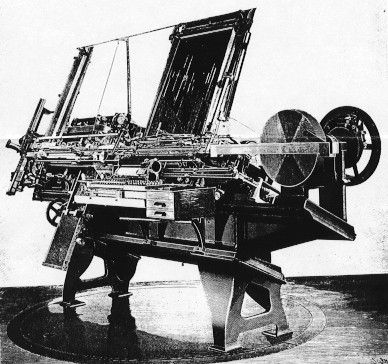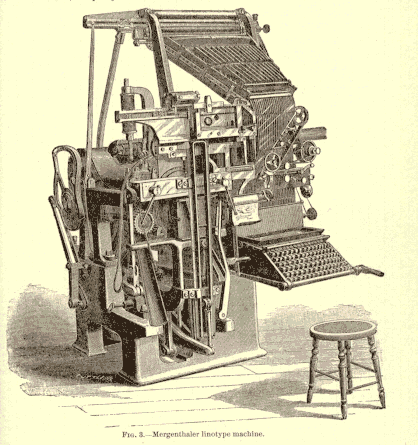The Paige Compositor
Today, we'll meet the man who bankrupted Mark Twain. The University of Houston's College of Engineering presents this series about the machines that make our civilization run, and the people whose ingenuity created them.
Typesetters in Gutenberg's time had to pick up and set one letter at a time. And that's how type was still set just ahundred years ago. Between 1822 and 1884, inventors struggled to mechanize this slow process. Ottmar Merganthaler finally succeeded with his Linotype machine in 1884. After that, Linotype operators set type five times as fast as a human typesetter could.
But historian Judith Lee tells us about another inventor, James Paige. Paige patented his own typesetting machine, the Paige Compositor, 12 years earlier. Then he joined with the Farnham Company in 1877. The Farnham Company went to its best known investor, Mark Twain, for support. Twain was intrigued by Paige's machine and began to put money into it. By 1882 Paige had built a functioning compositor.
Paige made two subtle, but serious, mistakes in designing his machine. The first was a compulsion to keep improving it. He wasn't ready to patent the production version until 1887. By then, Linotype machines had been on the market for three years. But Paige was certain he had the better machine. His Compositor could set type 60 percent faster than the Linotype. How could he lose!
Mark Twain had long since become a true believer in the Compositor. By now he'd assumed a major financial responsibility for it in exchange for a percentage of the anticipated profits.
Then Paige's second mistake surfaced. The Compositor was a temperamental race-horse -- the Linotype was a steady work-horse. Paige'd designed his machine to function like a human being. He'd consciously copied human hand motions. But Merganthaler had made his Linotype without reference to human function. He understood that machines can move in ways that humans can't. So his Linotype was simpler, cheaper, easier to maintain, and less liable to break down. Machine tolerances weren't as tight. Furthermore, with 18,000 parts, Paige's Compositor was far more complicated. It ultimately priced itself right out of the market.
It took until 1894 for the competitive failure of the Compositor to become complete. After that, Paige died penniless in a poorhouse, and Mark Twain went bankrupt. Twain later observed that he'd learned two things from the experience -- not to invest when you can't afford to, and not to invest when you can. The one surviving Compositor is housed in the Mark Twain Memorial in Hartford, Connecticut. It's a beautiful machine.
But we'd better understand today that good designs have to do more than just carry out their function. Good designs have to be robust, simple, maintainable, and easy to manufacture.
I'm John Lienhard, at the University of Houston, where we're interested in the way inventive minds work.
(Theme music)
Lee, J. Y., Anatomy of a Fascinating Failure. American Heritage of Invention and Technology, Summer 1987, pp. 55-60.
This episode has been substantially reworked as Episode 1372.

(From Inland Printer, 1903)
The Paige Compositor

(From Appleton's Cyclopaedia of Applied Mechanics, 1892)
Merganthaler's Linotype Machine

(Image from Munsey's Magazine, April, 1897)